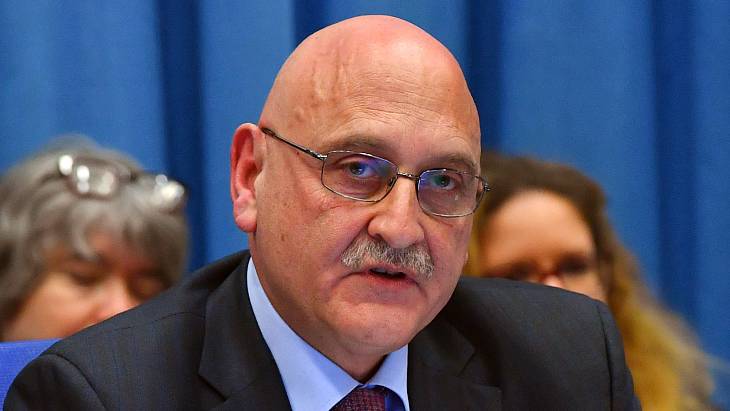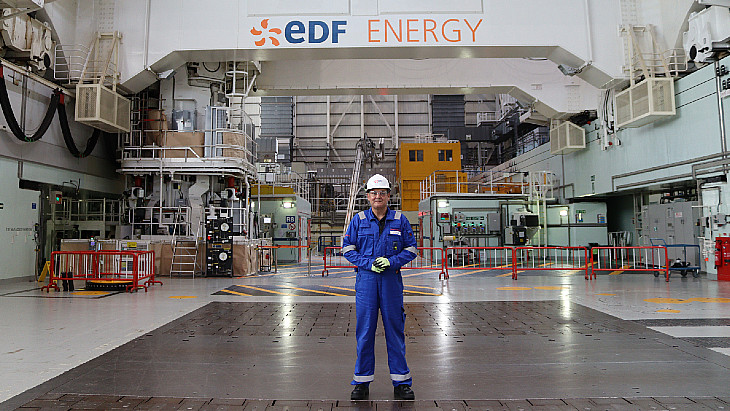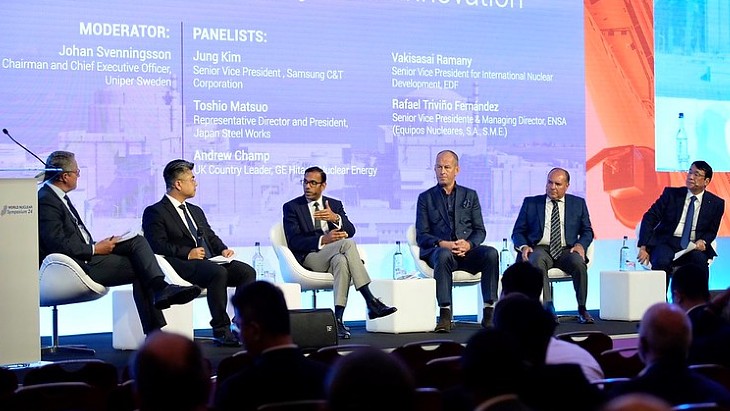Viewpoint: The nuclear industry’s need for harmonisation

Canadian perspective
Canada, like many other countries, has committed to reach net-zero emissions by 2050 in the face of the climate crisis and seeks to deploy SMRs in support of this goal. The rate at which like-minded countries seek to undertake this deployment requires their national regulators to be expeditious in their harmonisation approaches.
In Canada, SMR deployment began in 2019 with the proposed Global First Power project at Chalk River Laboratories near Ottawa. Then, in December 2021, Ontario Power Generation selected the GE Hitachi BWRX-300 boiling water reactor for the Darlington New Nuclear Project near Toronto. They will be applying for a construction licence this autumn.
These projects make Canada the first among G7 nations to announce the deployment of a grid-scale SMR, and the CNSC the first regulator to review one. The CNSC priority is to focus our efforts on continued regulatory readiness and develop informed practices, keeping safety as number one while ensuring its review process is risk informed. The CNSC will continue to support the great work of the International Atomic Energy Agency’s SMR regulators forum, Western European Nuclear Regulators’ Association (WENRA), World Nuclear Association's CORDEL working group and the Nuclear Energy Agency (NEA).
Culture shift
The CNSC is approaching regulation in a new collaborative way, different to how it approached nuclear power plant new builds in the 1980s and 1990s. Such an approach presents a culture shift for regulators. While this culture shift does not replace safety as the overriding priority, it asks regulatory senior leadership to encourage new and innovative ideas on how best to regulate. Regulators must start to ask themselves key questions such as "How safe is safe?", "How can we apply a graded approach with progressive regulatory approvals?", "How can we include hold points in licences and ongoing compliance verification measures to be lifted once the clearly defined regulatory expectations have been met?".
Ongoing engagement with the Canadian public, including indigenous nations and communities will be of critical importance along with building public trust and national safety culture for regulators, operators, and government agencies.
Bilateral cooperation
While continuing to support these broader harmonisation and collaboration efforts such as CORDEL, the CNSC has been strengthening its collaboration with its partners, the UK Office for Nuclear Regulation and US Nuclear Regulatory Commission (NRC) and engaging with other emerging nuclear countries (Romania, Poland, UAE, among others).
The CNSC’s Memorandum of Collaboration with the NRC has been very advantageous. This collaboration is a priority for the CNSC as both regulators will be reviewing the GE-H BWRX-300 concurrently. The CSNC and NRC have developed an unprecedented strong relationship in which they are working together. In the past year, the regulators have published three publicly-available, joint reports:
-
A review of the safety analysis approaches of both countries
-
A review of the reactor vessel code classification for X-energy
-
A review of GE-Hitachi’s Containment Analysis Methodology Licensing Topical Report
The success of CNSC's collaboration with the NRC has been noted by applicants, notably Ontario Power Generation and Tennessee Valley Authority. They have seen the achievements of the joint efforts and have asked the two regulators to find ways to streamline the reviews in both countries by sharing the results of regulatory reviews, leveraging those reviews when possible and aligning codes and standards. The two utilities have subsequently signed a Memorandum of Cooperation to support the initiative on their end.
Moving from collaboration to harmonisation
The CNSC recognises that bringing together experience and expertise while maintaining the important aspects of Canadian sovereignty will position it to best carry out its mandate. International harmonisation and collaboration are of fundamental importance to the safe and successful global SMR deployment which has been endorsed by the Canadian government as a key tool to combat climate change.
The work outlined in CORDEL's strategic plan for 2019-2023 aligns well with the CNSC goals but we challenge World Nuclear Association's CORDEL, MDEP (Multinational Design Evaluation Programme) and the IAEA to move quickly on their workplans and be open to revising those workplans considering the IAEA’s new Nuclear Harmonisation and Standardisation Initiative announced in March 2022.
Harmonisation is an innovative approach which, if successful, can support both newcomer and mature nuclear nations. Global nuclear regulators, World Nuclear Association's CORDEL, IAEA and WENRA must work together to ensure that harmonised SMR deployment is conducted safely and efficiently.
The international organisations in particular must ensure that their harmonisation initiatives complement each other and play to each organisation’s strengths. The nuclear industry cannot afford for competing initiatives to arise at this crucial time that would ultimately hinder it by spreading resources thinly and reducing efficiency.
Leadership from national governments is required for the development of suitable legal frameworks, policies and supporting the capabilities of national regulators to work in new ways. Effective collaboration will be achieved more quickly through a small group of stakeholders who can drive direct actions towards the streamlining of international licensing and regulatory frameworks. The nuclear industry should make use of lessons learnt from previously successful harmonisation when developing new regulations for advanced technologies.
CORDEL is one of the Working Groups of World Nuclear Association. Its mission is to facilitate the harmonisation of regulatory requirements as well as industrial codes and standards in order to enable standardized reactor designs to be deployed in several countries. The 4th CORDEL Regional Workshop was held in Lyon, France, from 18-20 May. It was organised by World Nuclear Association in cooperation with EUR and ENISS, and hosted by Framatome and EDF.
Over the course of the three days, the workshop brought together more than 100 participants from 19 countries, with more than 45 presentations. 52 different utilities, vendors, suppliers, national and regional stakeholders, industry organisations, universities, government and regulatory agencies, international organisations were represented.
“The CNSC has and will continue to be a strong supporter of the CORDEL Working Group which has led the way in outlining the benefits and means of international standardisation; we are building on the lessons learned from those endeavours and establishing new ways of collaborating,” said Ramzi Jammal, in his speech in the opening session.










